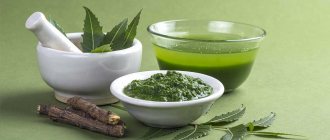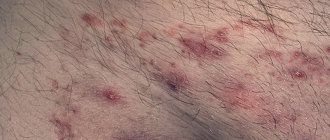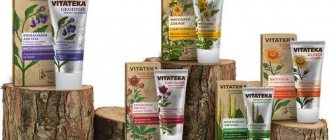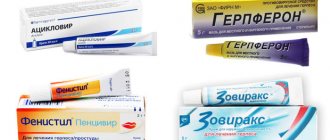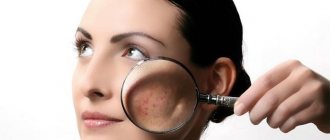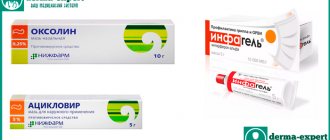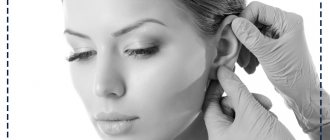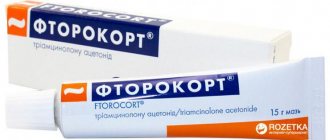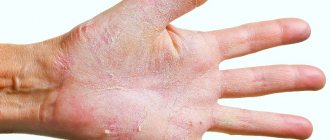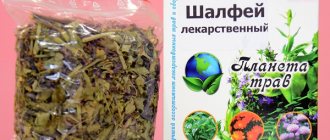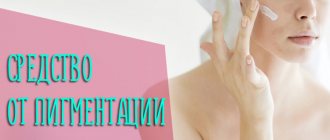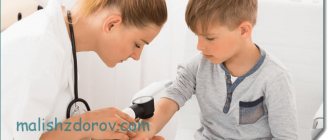Fungal ointment is the most effective type of treatment for this infection, the most accessible and effective. The choice of these drugs is extremely wide: you can choose a broad-spectrum drug or a drug against a specific pathogenic microorganism. There are other differences as well. An ointment for body fungus is different from a product that is used to treat thrush or nails. Some drugs, despite their effectiveness, have serious side effects, and this becomes an obstacle to their use in the treatment of children and pregnant women. To avoid mistakes when choosing the right ointment, you need to visit a dermatologist who, after an examination, will prescribe the drug.
Antimycotics - what are they?
In dermatology, antifungal creams and ointments are widely used to treat diseases caused by pathogenic microorganisms. Antimycotic drugs have a fungicidal and fungistatic effect - they stop the growth of fungi and completely destroy spores. Extended-spectrum medications help treat diseases caused by numerous infectious agents:
- candidiasis;
- onychomycosis;
- microsporia;
- dermatomycosis;
- trichophytosis;
- keratomycosis;
- mycosis of the skin, feet.
There are antimycotic drugs that are aimed at combating a specific type of pathogenic microorganisms. When the pathogen has not been identified, but urgent treatment is required, broad-spectrum antifungals are prescribed that fight most types of known fungi. Medicines in this form are effective:
- at the initial stage of the disease;
- in complex treatment of infection.
How to choose an ointment
Each ointment is effective against certain types of fungus
Modern pharmacy offers a large selection of fungicidal drugs for local therapy, which are different both in action and in pricing. Only a specialist in this field can select the optimal treatment regimen, based on test results and the advanced stage of the disease.
If at the initial stage of fungal development local treatment with ointments is sufficient, then in advanced forms it will be necessary to intensify therapy with oral medications.
Only after obtaining the result of skin scraping can it be determined which type of pathogenic microorganism is the causative agent of the disease: epidermophytes, yeast-like fungi, etc. Based on the results of laboratory tests, the dermatologist will prescribe the appropriate medication. The ointment is selected taking into account contraindications, the general health of the patient, etc.
Each anti-fungal ointment has its own active ingredient. Based on the type of pathogen, the optimal options are selected. Each active ingredient works effectively in the process of destroying certain types of fungi. Treatment does not bring a positive result in two cases: either the causative agent of the fungal infection was initially incorrectly identified, or the patient purchased a fake that cannot have any effect on the fungus. In other cases, unpleasant symptoms will quickly disappear, and the fungal infection will be completely destroyed.
Broad-spectrum antifungal drugs for external use
The pathology refers to skin diseases, so topical medications are prescribed for treatment. Antifungal creams and ointments are applied in a thin layer to the surface of the nail plates, genitals, feet, where the lesion is observed. Extended-spectrum drugs differ in:
- purpose depending on location;
- mechanism of influence on fungal cells;
- active substance;
- efficiency.
Medicines against pathogenic fungi, which have an unlimited effect, help to completely cure the infection if diagnosed early. When the disease is in the developing stage or is very advanced, in addition to antifungal creams, systemic drugs in tablets are used. It is important to consult a doctor to prescribe the drug:
- side effects are observed;
- drugs have contraindications;
- it is necessary to establish the duration of therapy.
Classification by mechanism of action
Fungal infection varies according to location, clinical manifestations, and degree of damage. All this is taken into account when prescribing means of a wide range of influence. Antifungal ointment acts on:
- the outer part of the stratum corneum of the epidermis in the absence of inflammation - keratomycosis;
- surfaces affected by Candida fungus;
- nail plates of the feet and hands with onychomycosis.
Antimycotic ointments for the skin of the body help cope with the manifestations of:
- inflammation covering the epidermis, scalp - dermatomycosis, trichomycosis;
- mycosis in the oral cavity;
- lesions of the hands, interdigital spaces, diaper rash caused by mold fungi;
- infections of the epidermis, subcutaneous tissue - systemic mycoses;
- pityriasis versicolor, caused by dimorphic fungi;
- athlete's foot, groin area, skin folds.
According to active substance
Broad-spectrum antifungal ointments have an effect on pathogenic microorganisms depending on their chemical structure. Each group of drugs differs in its effect on fungi. There are polyene antibiotics that:
- destroy the membrane membrane of microorganism cells, which causes their death;
- used for severe infection;
- Amphotericin B – fights mold species, dermatomycosis;
- Natamycin is effective in the treatment of intestinal and mucosal candidiasis.
Known antifungal agents include:
- Azoles inhibit the synthesis of ergosterol in the cell membrane, stopping the proliferation of microorganisms. A high concentration of the substance is required. Itraconazole – treats skin mycoses, onychomycosis, lichen. Ketoconazole - used for large affected areas, does not act against mold species.
- Non-polyenes inhibit cell division processes, thereby destroying the structure of fungi. Griseofulvin – counteracts all microorganisms of the genus Candida.
To combat fungal infections, drugs with an extended spectrum of effects on microorganisms are prescribed:
- Allylamines cause cell death by inhibiting the synthesis of ergosterol and promoting the accumulation of squalene. Terbinafine – counteracts all types of fungi, treats mycoses, lichen versicolor. Naftifine - fights infection of smooth skin, candidiasis.
- Pyrimidines - penetrate the cell membrane, disrupt the synthesis of DNA and proteins. Ciclopirox is effective in the fight against candidiasis and onychomycosis. Batrafen - indications for use - damage to the skin and mucous membranes.
By purpose
Antifungal drugs that counteract a wide range of microorganisms are classified according to their intended purpose. You can choose ointments that are effective in combating fungus on certain surfaces of the body. It is recommended to buy medications prescribed by a doctor at the pharmacy closest to your home:
- for the intimate area - ointment for the treatment of thrush - Natamycin, vaginal cream Clotrimazole;
- against foot fungus – terbinafine, Naftifine;
- for the treatment of the scalp - Griseofulvin, Ketoconazole;
- means for counteracting mycoses of smooth skin - Imizil, Lamisil.
Antifungal ointments for the intimate area
Not all ointments are suitable for use in the intimate area
The most delicate and sensitive skin on the human body is located in the intimate area. Many people are familiar with the feeling of itching and burning in the groin area - this is the main symptom of candidiasis. Pathogenic fungal microflora multiplies quickly in a warm, humid environment, so it is necessary to keep the area clean and dry. If the problem is already present, it must be dealt with immediately.
The best and most powerful remedy for candidiasis is Pimafucin. Nystatin ointment also works well. It is applied to the mucous membranes and kills yeast fungi. These are special antimycotic agents for the groin area. Treatment according to the standard lasts at least 10 days.
What antimycotic ointments are the most effective?
Dermatologists advise not to self-medicate, but to order and purchase from online pharmacies only the products they have prescribed. You can save on delivery if the supplier has a representative office in the city, for example, in Moscow or St. Petersburg.
To choose an ointment that is effective, you need to consider:
- active substance of the drug;
- presence of contraindications;
- side effects;
- peculiarity of action on mushrooms;
- price.
Zalain cream
The active ingredient of the drug, an imidazole derivative, counteracts most fungi. The cream disrupts the synthesis of ergosterol in the cell membrane. Features of the medicine Zalain:
| Characteristic | ||
| Active substance | Setoconazole | Azole group. Treats infections of the skin, vaginal mucosa, inguinal dermatophytosis. Can be applied to damaged surfaces. |
| What fungi does it destroy? | Microsporum spp., Candida, Trichophyton spp. | |
| Side effects | Redness, burning | |
| Contraindications | Hypersensitivity, allergic reaction to components | |
| Price, rub. | 500 |
Exoderil
Broad-spectrum antifungal ointment destroys most microorganisms. The drug accumulates on the surface - it can be applied once a day. Properties of Exoderil:
| Characteristic | ||
| Active substance | Naftifine hydrochloride | A group of allamines, has an antibacterial effect, relieves inflammation and itching. Treats onychomycosis, lichen versicolor, dermatomycosis. |
| What mushrooms does it destroy? | Candida, molds, dermatophytes | |
| Side effects | burning, dry skin | |
| Contraindications | Pregnancy, breastfeeding, intolerance to ingredients | |
| Price, rub. | 450 |
Nizoral
A broad-spectrum ointment treats fungal infections and prevents relapses of the disease. The product is applied morning and evening. Features of Nizoral:
| Characteristic | ||
| Active substance | Ketoconazole | Eliminates itching, burning, pain, regenerates affected tissue. Treats pityriasis versicolor, onychomycosis, dermatomycosis of the skin, seborrhea. |
| What fungi does it destroy? | Dermatophytes, yeast forms | |
| Side effects | Skin rashes | |
| Contraindications | Individual intolerance, pregnancy, childhood | |
| Price, rubles | 450 |
How to treat fungus on hands
The question “how to treat fungus on the hands” arises first among patients. Itching, burning and peeling are symptoms that you want to get rid of as soon as possible. However, mitigating the signs of the disease is far from the only thing that needs to be done for complete healing. Treatment of fungus on the hands should be comprehensive and include the use of local and systemic medications, lifestyle changes and a new diet. The general principles of treating mycosis on the hands are as follows:
- if the disease is at an initial or moderate severity, it is sufficient to use local preparations - ointments, creams, lotions, sprays and gels;
- with moderate fungus, systemic medications and laser therapy are used;
- for mycosis accompanied by a bacterial infection, antibiotic drugs are additionally prescribed.
Mycozoral cream
An effective antifungal agent that counteracts most types of pathogenic microorganisms differs in the duration of treatment depending on the diagnosis. The product is applied twice a day. Specifics of Mycozoral:
| Characteristic | ||
| Active substance | Ketoconazole | It counteracts streptococci, staphylococci, treats inguinal dermatophytosis, candidiasis of the skin and mucous membranes. |
| What mushrooms does it destroy? | Dermatophytes, yeast, dimorphic | |
| Side effects | Hives, burning | |
| Contraindications | Skin disorders, hypersensitivity to the product | |
| Price, rub. | 230 |
List of the best effective remedies
The top 23 most effective drugs include the following.
Pimafucin
The ointment affects all fungal microorganisms. It is enough to apply it to the affected area of skin or nail twice a day until all symptoms of infection are completely eliminated.
It can be used as a prophylactic. The ointment is not absorbed into the blood, so it can be used by pregnant, nursing mothers and children.
Nystatin
The ointment is applied to the affected area twice a day. The course of treatment is up to 2 weeks. The product is effective and does not cause allergic reactions. Available according to prescription. Cannot be used during pregnancy.
Clotrimazole
Effective at the initial stage of the disease. Prevents the proliferation of mold fungi and Candida. Course – up to 1 month. It is inexpensive and does not cause allergic reactions. Disadvantages: not very pleasant smell and leaving marks on clothes. Cannot be used by children under 12 years of age.
Exoderil
Effective against all types of fungi that affect the skin of the feet. Has an antibacterial effect, eliminates inflammatory processes. The course of treatment is up to 2 months, in severe cases – up to 8 months.
Cannot be used by children, pregnant or breastfeeding women.
Nizoral
An effective remedy against fungal infections, inhibiting the growth and development of the fungus. Available in the form of cream, tablets and shampoo. The first results are noticeable within 1-2 weeks. The product in the form of an ointment is used in the later stages of the disease.
Ketoconazole
The drug is available in tablet form. Eliminates many fungi, blocking the formation of colonies and the process of their spread, which completely eliminates the fungus. Taken once a day during meals. Can be used by both adults and children.
The advantage is affordable cost.
Mycospor
The product helps with primary fungus, but its main purpose is to prevent the disease, so the best option is to use it after treating the fungus.
Shows high efficiency, has a neutral odor, and is quickly absorbed. Can be used for children over 1 year of age and pregnant women, but with caution.
Zalain
The product destroys cells of harmful fungus. It is used once: 1 vaginal suppository is inserted into the vagina before going to bed in a lying position. If symptoms of fungal infection persist, the drug must be administered again after 1 week.
Lamisil
The product prevents the spread of fungus and quickly restores areas of the nail that are affected by infection. Course duration is up to 2 months.
If you shorten the course, the disease may reappear. The cream has no unpleasant odors, is quickly absorbed, and is highly effective. You can find it in any pharmacy.
The disadvantage is the high cost.
Mycozolon
The ointment has antifungal, antibacterial and anti-inflammatory effects. It eliminates itching and flaking.
Terbinafine
An effective antifungal agent that immediately blocks the development of fungal infection in the initial stages of the disease. It is necessary to treat the skin of the feet every morning and evening. Course duration is up to 8 weeks.
The product should not be used by children under 12 years of age.
Mikozan
The product has a destructive effect on the lipid membrane of the fungus, destroying it and preventing its spread. The ointment creates an unfavorable environment for fungal infection. It can be used as a prophylactic.
Contraindication: children under 4 years of age.
Bufinal
Bifunal is an effective antifungal agent that must be applied to the fungus-affected area before bedtime. Duration of treatment is up to 3 weeks depending on the severity of the disease.
Contraindications: infancy, pregnancy in the third semester.
Candide
The cream contains components that are slowly absorbed into the nails and skin. They accumulate in pathological foci, which eliminates the provocateurs of the disease.
The cream can independently relieve the disease without the use of other drugs. Does not cause side effects. Can be used during pregnancy - except the first trimester.
The disadvantage is the high cost.
Tinedol
Fungal infection cream. Destroys fungus without causing side effects. The first results are noticeable after just a few days of daily use of the drug. The cream eliminates unpleasant symptoms of infection, eliminates inflammatory processes, and promotes rapid healing of the skin.
Novastep
The ointment slows down the development of fungal infections, destroys pathogens, and eliminates unpleasant odors.
The drug disinfects the nail plate and skin, eliminates peeling, and restores areas affected by fungus. Auxiliary components (vitamins, celandine and larch extract) enhance the effect of the drug.
Salicylic
A folk remedy for treating fungal infections. The ointment suppresses the sebaceous glands, reduces sweating, which eliminates unpleasant odor and a favorable environment for the development of pathogenic microorganisms. The stratum corneum softens, and the fungus becomes easier to remove mechanically without damaging the nail.
Zinc
A universal drug that helps with fungal infections, as well as diaper rash and pimples. The ointment contains zinc oxide, which destroys the fungus and relieves itching and burning. The product strengthens the nails and skin of the feet and has a minimum of contraindications. Can be used by adults and teenagers. The course lasts up to 1 month.
The drug is applied every day before bedtime. It is inexpensive and has a simple composition, but takes a long time to absorb. One course will require several tubes.
Sulfuric
The ointment has been used for a long time to eliminate fungal infections. It is available in every pharmacy and is inexpensive. The drug has an anti-inflammatory effect, preventing the spread of infection. The affected tissues soften and quickly regenerate.
Sulfur ointment shows effectiveness on any parts of the body that are affected by fungus. Its regular use for a month creates resistance to various types of fungus.
Disadvantage: possible redness of the skin.
Vishnevsky
The instructions for the ointment do not contain fungal infection as an indication for the use of the drug, however, user reviews allow us to conclude that the ointment is effective against such a problem. At the same time, it remains a folk method of treating fungus.
The ointment contains birch tar, a natural component that has anti-inflammatory and antiseptic properties. As a result, it perfectly fights fungal infections. The xeroform contained in the composition does not have an antifungal effect, but it accelerates the healing of affected areas and enhances the effects of tar.
Levomekol
The ointment is used externally. It has antibacterial properties, which allows you to restore skin cells on your feet. Using the ointment eliminates cracks on the feet, relieves inflammation, and heals wounds quickly and effectively. The drug is safe for health and has no side effects.
However, if you are hypersensitive, the ointment should not be used..
Ichthyol
The ointment is effective in fighting fungus: it has an anti-inflammatory effect, disinfects the affected area and promotes its rapid regeneration. Peeling, itching and excessive dryness of the skin are eliminated.
If desired, you can mix the drug with glycerin. The ointment is applied to the affected area of skin and fixed with a bandage. The period of use of the product is up to 2 weeks. If the fungal infection is in an advanced stage, then the ointment can be used for up to 1 year.
Thai
The ointment is successfully used in the treatment of fungal infections, as well as for urticaria, eczema and skin lesions. The drug prevents the proliferation of fungus and bacteria, has an antiseptic and antibacterial effect. It can be used not only for treatment, but also for the prevention of fungal infections.
Mifungar cream
The product for topical use has a therapeutic effect against most pathogenic fungi. The cream is applied at night. Mifungar Features:
| Characteristic | ||
| Active substance | Oxiconazole nitrate | Synthetic derivative of imidazole, antifungal agent for skin and hair. |
| What fungi does it destroy? | Active against yeast forms, dermatophytes | |
| Side effects | Rash, itching, tingling | |
| Contraindications | Age less than 8 years, sensitivity to imidazole | |
| Price, rub. | 270 |
- How to quickly increase hemoglobin in the blood
- Sour cream cupcake - video recipes. How to make sour cream pie
- Japanese diet for 7 days - reviews and results with photos. Japanese diet menu for 7 days
Fundizol
An inexpensive ointment for skin diseases with a wide spectrum of action, helps with pustular rashes that accompany mycoses. A combined drug with natural ingredients. Specifics of Fundizol:
| Characteristic | ||
| Active substance | Salicylic acid | Suitable for the prevention and treatment of onychomycosis, mycoses of the feet and hands, eliminates inflammation, restores damaged tissue, and has an antiseptic effect. |
| What mushrooms does it destroy? | No limits | |
| Side effects | Allergy to components | |
| Contraindications | None | |
| Price, rub. | 85 |
Terbinafine
The most popular antifungal ointment for feet and body surfaces. The spectrum of action is the widest. Distinctive aspects of Terbinafine:
| Characteristic | ||
| Active substance | Terbinafine hydrochloride | Treats lichen versicolor, inguinal dermatophytosis, mycoses of smooth skin, feet, and nails. Eliminates itching, inflammation, pain. |
| What fungi does it destroy? | Most pathogenic microorganisms | |
| Side effects | Redness, itching, burning | |
| Contraindications | Kidney, liver failure, childhood, tumors, pathologies of the endocrine system | |
| Cost, rub. | 85 |
Ointments for mycosis on the armpits
Instructions for using the ointment for the axillary area are written on the back of the package. You should be very careful and control the drying of the product so as not to erase it yourself with motor movements.
Atifin – the substance Terbinafine has a therapeutic effect. The drug itself is absorbed in extremely small doses, so it is recommended to use anti-fungal tablets or capsules together with the cream.
Terbizil is an ointment aimed at curing mycosis of the armpits and providing preventive measures. Completely stops the reproduction and development of viral microorganisms.
Mikonorm is a drug that actively destroys infection in the armpits. Intensively fights dermatitis and yeast-like viruses.
The name and list of creams for fungus will definitely allow you to know how to treat your disease, but only a doctor should prescribe the prescription. It is the dermatologist who will qualitatively provide the necessary assistance and guide you through the path to complete recovery.
Batrafen cream
This antifungal agent fights most types of microorganisms. Stops the growth of fungi in a short time. Features of Batrafen:
| Characteristic | ||
| Active substance | Ciplopirox olamine | Highly effective in the fight against onychomycosis, candidiasis, and lichen. It has an antibacterial, astringent effect, relieves itching and inflammation. |
| What mushrooms does it destroy? | Molds, yeasts, dermatophytes, dermatomycetes | |
| Side effects | Signs of allergies - difficulty breathing, rashes, dizziness | |
| Contraindications | Children, pregnant women | |
| Price, rub. | 380 |
Cyclopiroxolamine
Broad-spectrum antifungal ointment. When the active substance accumulates in the body, it prevents re-infection. Specifics of Cyclopiroxolamine:
| Characteristic | ||
| Active ingredient | 6-Cyclohexyl-1-hydroxy-4-methyl-2-(1H)-pyridinone | Eliminates peeling, burning, itching, redness. Treats tinea versicolor, candidiasis, onychomycosis. |
| What fungi does it destroy? | Parasitic, mold, yeast forms | |
| Side effects | Penetration of the product into the bloodstream, dry skin, rashes | |
| Contraindications | Allergy to iodine, breastfeeding, pregnancy | |
| Price, rub. | 370 |
Mycospor
An antifungal agent helps to cope with a fungal infection in a short time. The medicine treats advanced forms of the disease. Properties of Mycospor:
| Characteristic | ||
| Active substance | Bifinazole | Treats superficial candidiasis, dermatophytosis of the intimate zone, mycosis of nails, hands, feet. Eliminates itching, inflammation, pain. |
| What fungi does it destroy? | Candida, dermatophytes, corynebacteria, molds | |
| Side effects | Swelling, redness, burning | |
| Contraindications | Intolerance to components, lactation period, pregnancy, age up to 12 years | |
| Price, rub. | 580 |
Symptoms
All types of fungus have the same primary and further signs of development:
- Severe, sometimes unbearable itching, which partially goes away from contact with cold water.
- The presence of a strong unpleasant odor from certain areas of the skin.
- The parts of the skin affected by mycosis will begin to coarse and become very dense.
- Severe peeling follows rough skin.
- Sometimes ulcers may occur.
In the axillary areas there are some differences in symptoms from the usual fungus. The appearance of a virus in the armpits brings with it: pain, burning and itching. There is no unpleasant odor due to its mixing with the hearth aroma.
Pimafucin
A broad-spectrum antifungal ointment that is effective in the treatment of candidiasis. The product is applied once a day. Features of Pimafucin:
| Characteristic | ||
| Active ingredient | Natamycin | Group of polyenes. Treats infections of the feet, genitals, and body. Recommended for newborns, pregnant and nursing mothers. |
| What fungi does it destroy? | Microspores, yeast forms, less sensitivity in dermatophytes | |
| Side effects | Skin irritation, burning | |
| Contraindications | Individual intolerance | |
| Price, rub. | 290 |
Features of treatment
If your child is unlucky enough to contract athlete's foot (for example, in a pool or on the beach), then treatment will not be as simple as for an adult.
If we talk about antifungal ointments, then as their active components they contain various substances that have not yet been fully studied for their perception by the child’s body. This means that it is impossible to say that they are completely safe. In children under 2 years of age, most ointments have contraindications for use.
Important! At older ages, such drugs are prescribed by a specialist in cases where the expected benefit is significantly greater than the possible harm.
Treatment of foot fungus in children is a rather long process and can take more than one month. During this time, the child is suspended from attending preschool institutions and school. During the course of his illness, all his clothes must be ironed with a very hot iron.
Clotrimazole
An inexpensive and very popular ointment with a broad antifungal effect. The range of applications covers all types of mushrooms. Specifics of Clotrimazole:
| Characteristic | ||
| Active substance | Clotrimazole | An imidazole derivative is used for infections of the mucous membranes of the genital organs, oral cavity, skin, and nail plates. Relieves pain, itching. |
| What fungi does it destroy? | Most pathogenic microorganisms | |
| Side effects | Burning, redness | |
| Contraindications | 1st trimester of pregnancy, individual sensitivity | |
| Cost, rub. | 70 |
Mycoseptin
Antifungal ointment, the spectrum of action of which covers most types of microorganisms. The product is widely used for skin lesions. Properties of Mikoseptin:
| Characteristic | ||
| Active ingredient | Undecylenic acid, zinc undecylenate | Used for the prevention and treatment of mycoses. Zinc has an astringent effect, undecylenic acid has an antifungal effect. |
| Destroys fungi | Microsporon, Epidermophyton | |
| Side effects | Irritation, swelling, burning | |
| Contraindications | Under two years of age, hypersensitivity | |
| Price, rub. | 350 |
Treatment of fungus in children
The causes of fungus on the face of a child in the first year of life are the imperfection of one’s own immunity and the weakness of the microflora. Children usually encounter mycoses in the first three months of life. Therapy comes down to regular moisturizing and softening of the skin, and adjusting the diet. Additionally, mild antiseptics and medicinal herbs with antiseptic properties can be used to reduce the symptoms of the fungus.
Children over two years old often experience trichophytosis and microsporia. Infection occurs due to contact with street animals. The symptomatic manifestations of such a fungus on the face of a child completely repeat the symptoms of ringworm in adults. Treatment includes a standard treatment regimen for fungal disease. The choice of drugs is made by a doctor, since children's skin is very sensitive and aggressive antifungal agents can lead to irritation.
Fungoterbin neo
The product is widely used for skin infections. Antifungal ointment creates high concentrations in tissues. Features of Fungoterbin neo:
| Characteristic | ||
| Active ingredients | Terbinafine chloride, urea | Softens, penetrates deeply into skin surfaces and tissues. It has a therapeutic effect on lichen versicolor, lesions of the feet and nails. |
| What fungi does it destroy? | Premorphic, yeast, mold species, dermatophytes | |
| Side effects | Rarely redness, itching | |
| Contraindications | Children under two years of age, hypersensitivity to components | |
| Cost, rub. | 380 |
Antifungal drugs for children
It is necessary to pay great attention to the prescription and use of antimycotic drugs in childhood. This is due to the high toxicity of the active ingredients. Do not use without a doctor's prescription. Popular means:
- Terbizil - used from the age of two only externally, treats the skin and scalp. Possible itching, burning, cost - 245 rubles.
- Nystatin ointment - allowed for treatment of newborns, applied only externally, cannot be used on the oral mucosa. Allergies are possible, price – 90 rubles.
Dermatologists allow the treatment of children with antifungal ointments:
- Fungoterbin neo - used from the age of two, treats lesions of the skin and nail plates. Side effects are rare, price - 380 rubles;
- Mikoseptin is an antifungal agent for children from the age of two. Treats a wide range of mycoses, side effects - redness, irritation, price - 350 rubles;
- Pimafucin - copes with thrush, starting from infancy. Rarely causes burning, itching, cost - 290 rubles.
Reasons for the development of the disease
Fungal infection can affect any area of the body, including the face
Fungus on the face is a consequence of spores of pathogenic microflora entering the epidermis. The disease can be caused by:
- yeast fungus;
- dermatophytes;
- mold fungi.
The yeast fungus that causes skin lesions is Candida or Malassezia. In the vast majority of cases, the cause of fungus on the skin of the face is Candida, while Malassezia provokes the development of seborrhea on the scalp, temples and neck. Yeast infection occurs through contact with another person, but most often the cause of symptoms on the face is a pathogenic agent already present in the body. Thus, symptoms of yeast fungus on the skin of the face may appear in women who have had thrush.
Dermatophytes enter the body through contact with an infected person, animal, or through soil. These fungi affect small areas of the skin and are dangerous for the development of complications.
Molds on the face are rarely diagnosed and only in the case of systemic mycosis, when pathogenic microflora affects the entire body, including mucous membranes and internal organs.
The most common cause of fungus on the face of a child is Candida; in adults, the pathology is caused by opportunistic fungi that destroy keratin in the skin.
Yeast fungi on the face can be treated quite successfully. Keratomycosis is dangerous due to the appearance of age spots, which are very difficult to get rid of.
Provoking factors
The pathogenic fungus does not take root in the body of a healthy person. A strong immune system can independently restrain the growth of microflora and prevent the development of mycosis. Thus, the main provoking factor predisposing to the development of mycosis is a decrease in immunity.
The risk of infection increases in the following cases:
- the presence of injuries and microcracks on the skin of the face;
- close contact with an infected person;
- endocrine disorders and hormone imbalances;
- presence of chronic systemic diseases;
- hyperhidrosis and neglect of personal hygiene;
- contact with stray animals.
Any damage to the integrity of the epidermis leads to a decrease in local immunity, which increases the chance of developing a disease when fungal spores come into contact with the skin. Some types of disease, such as trichophytosis or ringworm, are highly contagious and only develop after close contact with a carrier. You can become infected from another person or from a stray animal; in the second case, the disease develops faster and the symptoms are more pronounced.
Thyroid dysfunction and hormonal fluctuations lead to decreased immunity. Some people are carriers of opportunistic microflora, which under normal conditions perform important functions in the body. If there are problems with the thyroid gland, the population of these fungi may increase. As a result, the balance of beneficial microflora shifts and mycosis develops. This is true primarily for fungi of the genus Candida, which are present in the body of almost every person.
Excessive sweating leads to a decrease in local immunity. Sweat irritates the skin and creates conditions favorable for the growth of fungi.
Chronic diseases, such as diabetes and psoriasis, increase the risk of developing mycosis. The fungus can also accompany lupus erythematosus and is often detected in HIV-infected people.
Lyceum fungus in children is the result of a child becoming infected with Candida while passing through the birth canal. In this case, symptoms are found on the cheeks, around the mouth and directly on the oral mucosa.
What fungal remedies are allowed during pregnancy and lactation?
It is possible that a fungal infection may occur while expecting a baby. The toxic properties of ointment ingredients have a negative effect on the fetus; independent treatment with antifungal agents is unacceptable. The following drugs are approved for use:
- Clotrimazole - except for the 1st trimester, is used for fungus of the nails, feet, mucous membranes, redness and burning are possible, cost - 70 rubles;
- Miconazole is allowed throughout pregnancy for skin treatment. Vaginal use for thrush - starting from the second trimester, allergy at the application site is possible, price - 130 rubles.
Under the supervision of a doctor, subject to instructions, use antifungal ointments for pregnant women and lactation:
- Fundizol - effective for lesions of the feet and nails, contraindicated in case of individual intolerance, price - 85 rubles;
- Mikoseptin - treats all types of mycoses, swelling and redness at the site of application are possible, price - 350 rubles;
- Terbinafine - only on the surface of the skin in case of urgent need, irritation, itching, require discontinuation of the medication, cost - 80 rubles.
Prevention of finger fungus
Age and social status do not in any way affect protection from the fungus, since it can live absolutely anywhere . However, most often these are wet areas - a swimming pool, sauna, bathhouse, public beach. If the human body is weakened by chronic diseases, and the skin is covered with wounds and cracks, the likelihood of “catching” a skin fungus increases. To avoid this, it is important to follow a few simple recommendations:
- If you have to work with acidic or alkaline liquids, be sure to wear gloves. This way you will protect your skin from the appearance of wounds and microcracks.
- Do not take antibiotic medications unless necessary. Medicines of this type destroy all bacteria, including those vital to the body. Prolonged and uncontrolled use of antibiotics leads to a weakening of the defenses, which makes the likelihood of getting sick higher;
- When visiting nail salons, choose a trusted nail technician. Before treating your nails, make sure that the special instruments are sterile. In everyday life, use only your own manicure tools. Try not to injure your nails - mushrooms can enter the body even through the smallest cracks.
Most often, people with weakened immune systems become carriers of fungal infections. The latter occurs for a variety of reasons: hypothermia, exposure to serious stress, physical and emotional overload, disruption of the daily routine.
